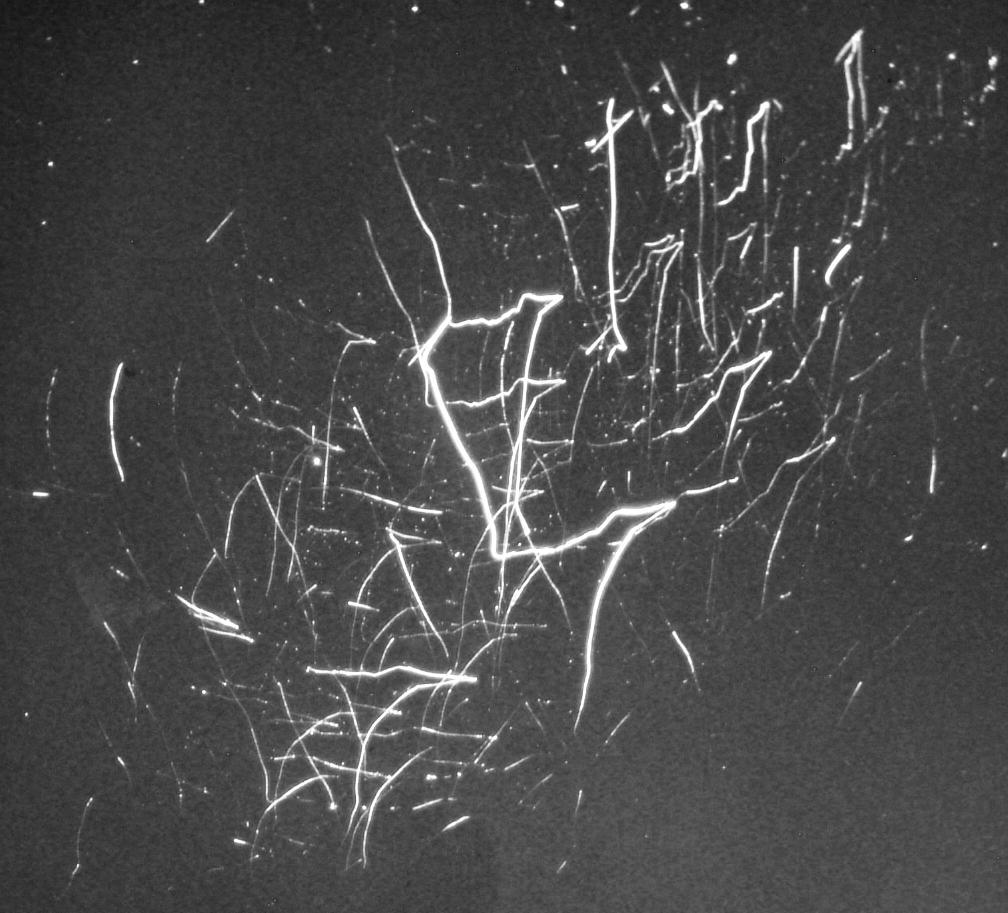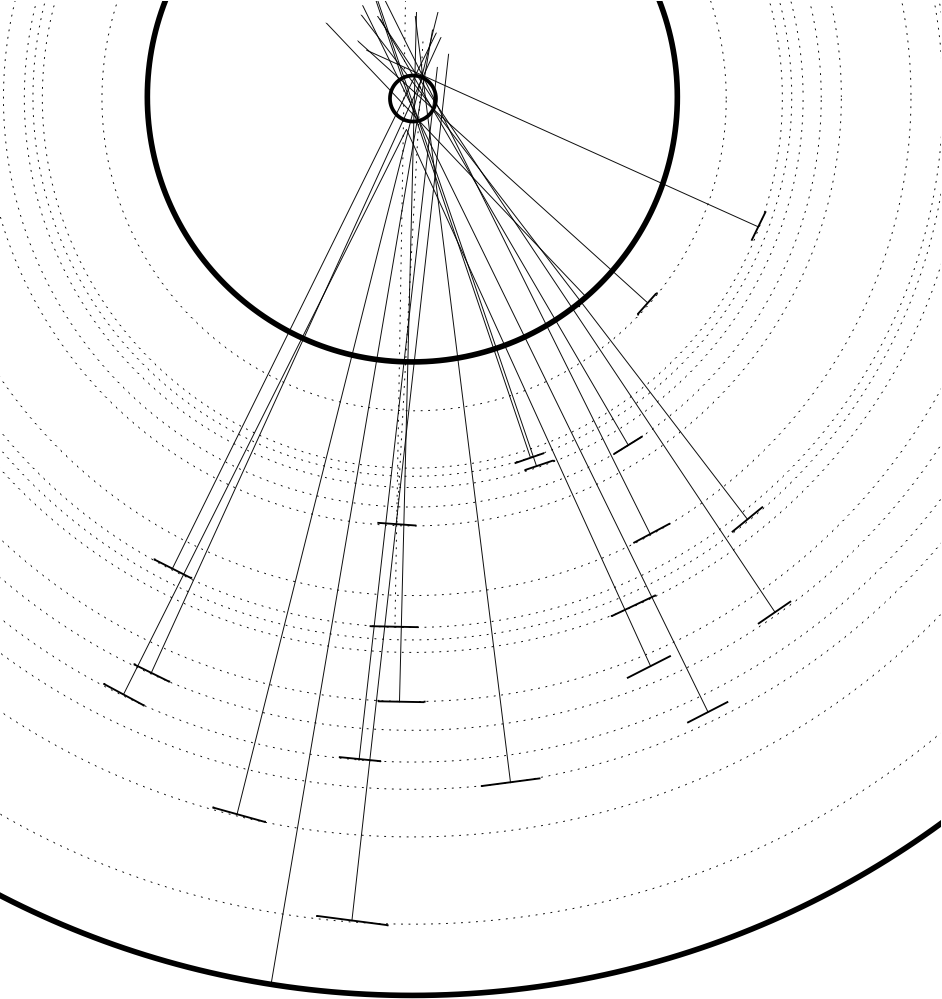are these particle tracks?

I want to take a hard look at the concept that new physics may be in play for experiments, based upon the new effect I observed for photographic emulsions [1] that were mentioned in my last post. One of the first questions that comes up is the question as to whether or not these tracks [1] are being created by some types of particles. How can we answer this?
The experimental method is simple:
- Exposure
- In total darkness or with the appropriate safelight, the creation of a relatively uniform exposure of photons from a white LED of about 1200 mcd at a distance of 6cm from the surface of a lith emulsion such as Arista Ortho Litho 3.0 for a time of about 250 ms.
- Processing
- Development of the emulsion for 1:30 m in a normal solution of lith developer such as Arista Lith Developer, stopping development with a water bath for 30 s, and fixing with a standard fixer for 2-4 minutes.
- Analysis
- Examination of the film using magnification. Preferably a microscope with 25x to 400x magnification.
We find that on most of the exposures contain one or more of a variety of tracks categorized in [1].
Examining one of the examples of this type of exposure, we find that the tracks are arranged in the exposures such that a central force is indicated. That is, dropping a perpendicular line from corresponding track segments, we see concentric circle patterns.

Fig. 1 Image from [1] (Figure 29.) dubbed "vector swarm."
Each of the track segments have all lined up along concentric circles around a point of central force. This indicates that the tracks were created by particles that responded during these exposures to a central force.

Fig. 2 Perpendiculars drawn from corresponding line segments intersect in the area of central force.
It does not appear likely that any effect other than particles could cause these types of tracks indicating a central force.
We will look more deeply into the central force analysis in coming posts.
- [1] Possible detection of tachyon monopoles in photographic emulsions,
- Engineering Physics (No. 6), 15-45 (2013).

Comments
Comments powered by Disqus